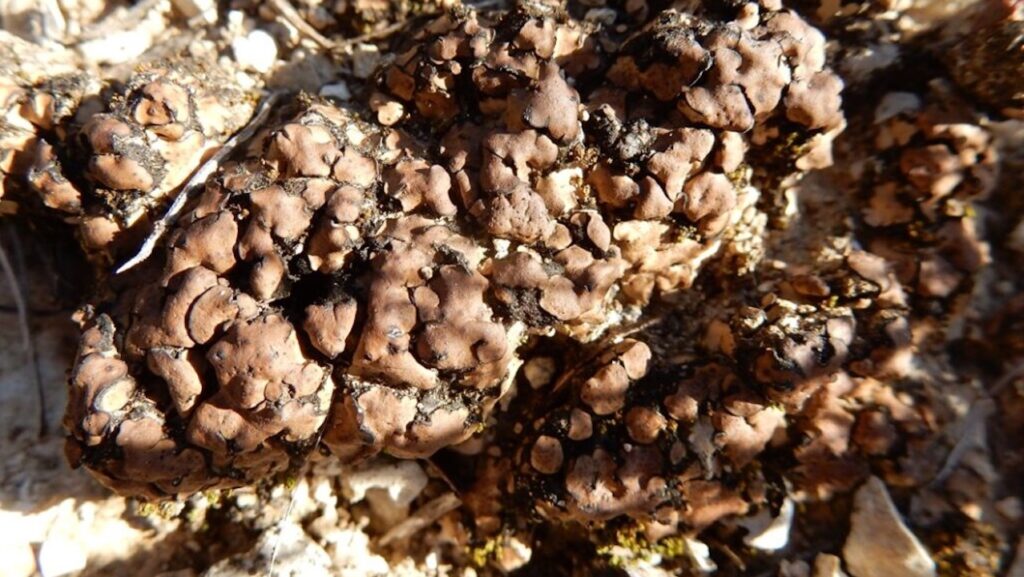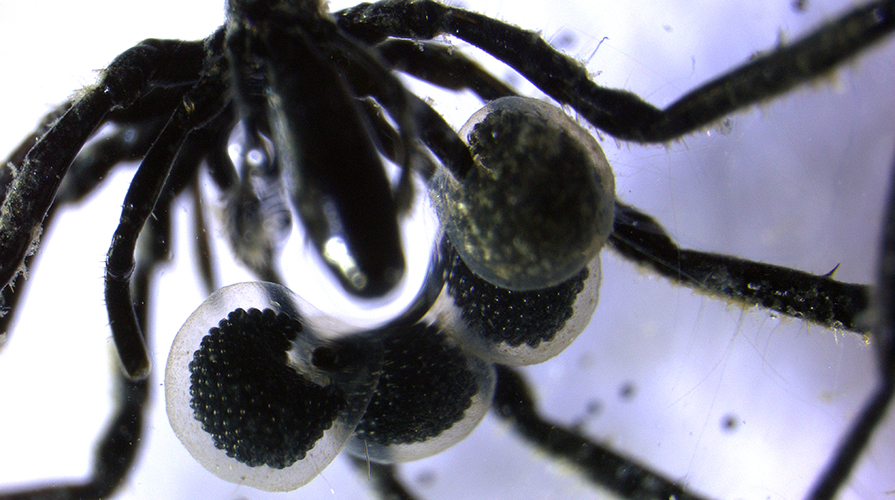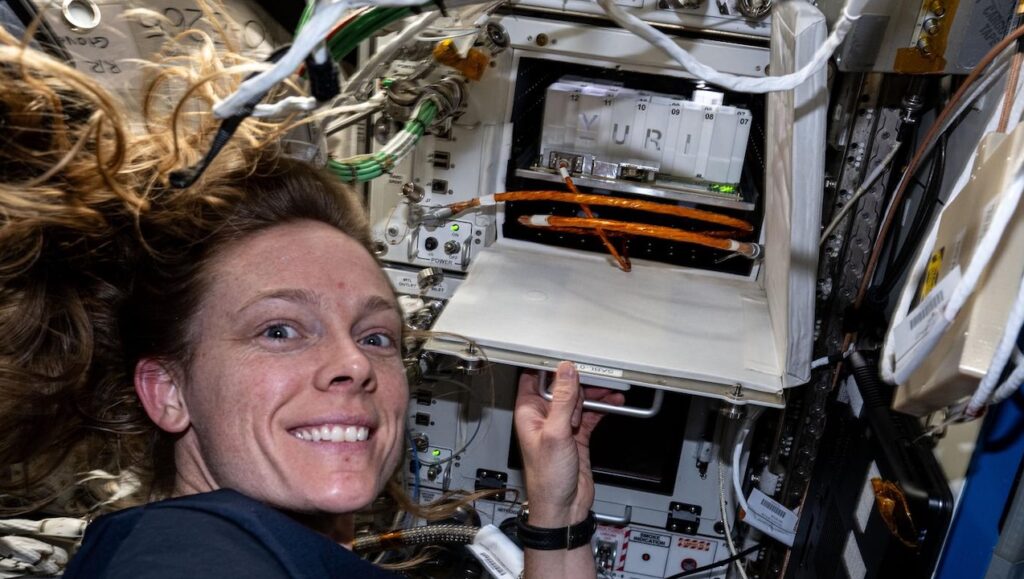NASA Spaceline Current Awareness List #1,094 5 April 2024 (Space Life Science Research Results)

Space Biology Research on ISS — NASA
The abstract in PubMed or at the publisher’s site is linked when available and will open in a new window.
Papers deriving from NASA support:
- Mehta SK, Suresh R, Brandt K, Diak DM, Smith SM, Zwart SR, Douglas G, Nelman-Gonzalez M, Clemett S, Brunstetter T, Crucian BE.Immune system dysregulation preceding a case of laboratory-confirmed zoster/dermatitis on board the International Space Station.J Allergy Clin Immunol Glob. 2024 May;3(2):100244.Note: ISS results. This article may be obtained online without charge.
Journal Impact Factor: Not available for this journal
Funding: “Supported by the NASA Human Research Program, Human Health and Countermeasures Element.” - Zupanska AK, Lockwood E, Zhang Y, Haveman NJ, Carver JA, Spern CW, Senyk E, Richards JT, Koss LL, Dimapilis DI, McDaniel SF.Designing payload and spaceflight operations for plants from extreme terrestrial environments.Front Space Technol. 2024 Apr 3;5:1376163.PI: A.K. ZupanskaNote: From the abstract: “Here, we present the development of Antarctic moss Ceratodon purpureus payload and flight operations for the ANT1 Radiation Tolerance Experiment with Moss in Orbit on the Space Station (ARTEMOSS) experiment to the International Space Station (ISS) given limited physical space and crew time.” This article may be obtained online without charge.
Journal Impact Factor: Not available for this journal
Funding: “The author(s) declare that financial support was received for the research, authorship, and/or publication of this article. This work was supported by the National Aeronautics and Space Administration—Biological and Physical Sciences (80NSSC22K0208 awarded to AZ and SM). Authors YZ, NH, JC, CS, ES, JR, LK and DD were supported by NASA’s Biological and Physical Sciences Division and by NASA’s ISS Program Office.” - Strohm AO, Johnston C, Hernady E, Marples B, O’Banion MK, Majewska AK.Cranial irradiation disrupts homeostatic microglial dynamic behavior.J Neuroinflammation. 2024 Apr 3;21:82.PI: M.K. O’BanionNote: This article may be obtained online without charge.
Journal Impact Factor: 9.3
Funding: “This work utilized the University of Rochester Wilmot Cancer Institute Imaging and Radiation Shared Resource and S10 NIH grant S100D021548 (BM). Additionally, this work was supported by T32ES007026 (AOS), a Joan Wright Goodman award from the University of Rochester (AOS), and NINDS R01 NS114480 (AKM). Lastly, work was supported by NASA 80NSSC21K0542 and an Ernest J. Del Monte Institute for Neuroscience Pilot Grant (MKO).” - Schmidt MA, Jones JA, Mason CE.Optimizing human performance in extreme environments through precision medicine: From spaceflight to high-performance operations on Earth.Camb Prism Precis Med. 2023;1:e27. Review.PI: C.E. MasonNote: This article published online in June 2023 and may be obtained online without charge.
Journal Impact Factor: Not available for this journal
Funding: PI reports NASA funding. - Lapointe MR, Laframboise T, Pirkkanen J, Tai TC, Lees SJ, Santa Maria SR, Tharmalingam S, Boreham DR, Thome C.Protracted exposure to a sub-background radiation environment negatively impacts the anhydrobiotic recovery of desiccated yeast sentinels.Health Phys. 2024 Apr 3. Online ahead of print.Note: This article may be obtained online without charge.
Journal Impact Factor: 2.2
Funding: S.R. Santa Maria is affiliated with NASA Ames Research Center. - Suman S.Enteric nervous system alterations in inflammatory bowel disease: Perspectives and implications.Gastrointest Disord. 2024 Mar 28;6(2):368-79. Review.PI: S. SumanNote: This article may be obtained online without charge.
Journal Impact Factor: 0.7
Funding: “This study is partly supported by the National Aeronautics and Space Administration (NASA), grant # 80NSSC24K0287; and the pilot grant from the Opportunity Funds Management Core of the Centers for Medical Countermeasures against Radiation, National Institute of Allergy and Infectious Diseases (NIAID), grant # U19AI067773 (sub-award # 4(GG014746-56).” - Finseth T, Dorneich MC, Keren N, Franke WD, Vardeman S.Virtual reality adaptive training for personalized stress inoculation.Hum Factors. 2024 Mar 28:187208241241968. Online ahead of print.PI: M.C. DorneichNote: This article may be obtained online without charge.
Journal Impact Factor: 3.3
Funding: PI reports NASA Grant 80NSSC18K1572: Adaptive Stress Training for Hazardous Conditions. - Waisberg E, Ong J, Masalkhi M, Zaman N, Sarker P, Lee AG, Tavakkoli A.Apple Vision Pro and the advancement of medical education with extended reality.Can Med Educ J. 2024 Feb 29;15(1):89-90.PI: A. TavakkoliNote: This article may be obtained online without charge.
Journal Impact Factor: Not available for this journal
Funding: “NASA Grant [80NSSC20K183]: A Non-intrusive Ocular Monitoring Framework to Model Ocular Structure and Functional Changes due to Long-term Spaceflight.”
Other papers of interest:
- Scotti MM, Wilson BK, Bubenik JL, Yu F, Swanson MS, Allen JB.Spaceflight effects on human vascular smooth muscle cell phenotype and function.npj Microgravity. 2024 Mar 28;10:41.Note: ISS results. This article may be obtained online without charge.
- Golaz D, Papenfuhs CK, Bellés-Sancho P, Eberl L, Egli M, Pessi G.RNA-seq analysis in simulated microgravity unveils down-regulation of the beta-rhizobial siderophore phymabactin.npj Microgravity. 2024 Apr 3;10(1):44.Note: A random positioning machine was used in this study to simulate microgravity. This article may be obtained online without charge.
- Bellomo RK, Zavalis EA, Ioannidis JPA.Assessment of transparency indicators in space medicine.PLoS One. 2024 Apr 2;19(4):e0300701.Note: From the abstract: “Space medicine is a vital discipline with often time-intensive and costly projects and constrained opportunities for studying various elements such as space missions, astronauts, and simulated environments. Moreover, private interests gain increasing influence in this discipline. In scientific disciplines with these features, transparent and rigorous methods are essential. Here, we undertook an evaluation of transparency indicators in publications within the field of space medicine.” This article may be obtained online without charge.
- Dominoni A.Design for inclusion in space: Parastronauts project.In: Design for Sustainability and Inclusion in Space: How New European Bauhaus Principles Drive Nature & Parastronauts Projects. Cham, Switzerland: Springer, 2024. p. 49-91.
- Ramos RL, Carante MP, Bernardini E, Ferrari A, Sala P, Vercesi V, Ballarini F.A method to predict space radiation biological effectiveness for non-cancer effects following intense solar particle events.Life Sci Space Res. 2024 Apr 2. Online ahead of print.Note: From the abstract: “In addition to the continuous exposure to cosmic rays, astronauts in space are occasionally exposed to Solar Particle Events (SPE), which involve less energetic particles but can deliver much higher doses. The latter can exceed several Gy in a few hours for the most intense SPEs, for which non-stochastic effects are thus a major concern. To identify adequate shielding conditions that would allow respecting the dose limits established by the various space agencies, the absorbed dose in the considered organ/tissue must be multiplied by the corresponding Relative Biological Effectiveness (RBE), which is a complex quantity depending on several factors including particle type and energy, considered biological effect, level of effect (and thus absorbed dose), etc.”
- Suzuki K, Tsuruoka C, Morioka T, Seo H, Ogawa M, Kambe R, Imaoka T, Kakinuma S, Takahashi A.Combined effects of radiation and simulated microgravity on intestinal tumorigenesis in C3B6F1 ApcMin/+ mice.Life Sci Space Res. 2024 Mar 30. Online ahead of print.Note: Hindlimb unloading is used in this study to simulate microgravity.
- Yu H, Jia X-Y, Gao L-N, Huyan T, Gou J-J, Gong C-L, Gu L-X.Transcriptome sequencing reveals the promotion of apoptosis and M1 polarization of microglia under simulated microgravity.Acta Astronaut. 2024 Apr 2. Online ahead of print.Note: From the abstract: “In this study, BV2 cells, representative of microglia, were cultivated in a Random Positioning Machine (RPM) system, specifically a 3D-clinostat to simulate microgravity.”
- Zea L, Warren L, Ruttley T, Mosher T, Kelsey L, Wagner E.Orbital reef and commercial low Earth orbit destinations—upcoming space research opportunities.npj Microgravity. 2024 Mar 29;10:43.Note: From the introduction: “The International Space Station (ISS) is a multi-nation project, the single largest structure ever put in Earth’s orbit. It has hosted over 250 people from over 20 countries and over 3,000 completed research investigations since assembly began in 1998. Several of these efforts have translated into scientific and technical breakthroughs and have enabled advancements in a myriad of fields. For example, protein crystal growth investigations performed on ISS have provided novel insights into multiple disease treatments, as have fundamental and applied research on Alzheimer’s Disease, Parkinson’s Disease, heart disease, and various cancers. The ISS has opened new fields of inquiry and fostered innovative techniques and capabilities, including the use of tissue chips in space, quiescent colloid research, 3D printing in microgravity, the development of new water purification systems, and lessons in how to live and thrive in space for longer durations. As the ISS comes to the end of its design life, NASA now plans to retire the platform in 2030, and has established the Commercial LEO Destinations (CLD) Program to plan for the future.” This article may be obtained online without charge.
- Bonmatí-Carrión M, Santhi N, Atzori G, Mendis J, Kaduk S, Dijk DJ, Archer SN.Effect of 60 days of head-down tilt bedrest on amplitude and phase of rhythms in physiology and sleep in men.npj Microgravity. 2024 Mar 29;10:42.Note: Head-down tilt bedrest study. This article may be obtained online without charge.
- Tu Y, Luo L, Zhou Q, Ni J, Tang Q.Fecal microbiota transplantation repairs radiation enteritis through modulating the gut microbiota-mediated tryptophan metabolism.Radiat Res. 2024 Apr 1. Online ahead of print.Note: This article may be obtained online without charge.
- Maity T, Saxena A.Challenges and innovations in food and water availability for a sustainable Mars colonization.Life Sci Space Res. 2024 Apr 4. Online ahead of print.
Astrobiology, Space Biology, Microgravity,








